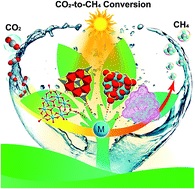兰亚乾教授课题组在 CHEMICAL SCIENCE发表研究论文
Hetero-metallic active sites coupled with strongly reductive polyoxometalate for selective photocatalytic CO2-to-CH4 conversion in water
Xie, SL (Xie, Shuai-Lei)[ 1 ] ; Liu, J (Liu, Jiang)[ 2 ]*(刘江) ; Dong, LZ (Dong, Long-Zhang)[ 2 ] ; Li, SL (Li, Shun-Li)[ 2 ] ; Lan, YQ (Lan, Ya-Qian)[ 2 ]*(兰亚乾) ; Su, ZM (Su, Zhong-Min)[ 1,3 ]*
[ 1 ] Northeast Normal Univ, Inst Funct Mat Chem, Dept Chem, Natl & Local United Engn Lab Power Battery, Changchun 130024, Jilin, Peoples R China
[ 2 ] Nanjing Normal Univ, Sch Chem & Mat Sci, Jiangsu Key Lab Biofunct Mat, Nanjing 210023, Jiangsu, Peoples R China
[ 3 ] CUST, Collaborat Innovat Ctr Opt Mat & Chem, Sch Chem & Environm Engn, Changchun 130028, Jilin, Peoples R China
CHEMICAL SCIENCE,201901,10(1),185-190
The photocatalytic reduction of CO2 to value-added methane (CH4) has been a promising strategy for sustainable energy development, but it is challenging to trigger this reaction because of its necessary eight-electron transfer process. In this work, an efficient photocatalytic CO2-to-CH4 reduction reaction was achieved for the first time in aqueous solution by using two crystalline heterogeneous catalysts, H{[Na2K4Mn4(PO4) (H2O)(4)]< subset of>{[Mo6O12(OH)(3)(HPO4)(3)(PO4)](4)[Mn-6(H2O)(4)]}16H(2)O (NENU-605) and H{[Na6CoMn3(PO4)(H2O)(4)]< subset of>{[Mo6O12(OH)(3)(HPO4)(3)(PO4)](4)[Co1.5Mn4.5]}21H(2)O (NENU-606). Both compounds have similar host inorganic polyoxometalate (POM) structures constructed with strong reductive {P4Mo6V} units, homo/hetero transition metal ions (Mn-II/(CoMnII)-Mn-II) and alkali metal ions (K+ and/or Na+). It is noted that the {P4Mo6V} cluster including the six Mo-V atoms served as a multi-electron donor in the case of a photocatalytic reaction, while the transition metal ions functioned as catalytically active sites for adsorbing and activating CO2 molecules. Additionally, the presence of alkali metal ions was believed to assist in the capture of more CO2 for the photocatalytic reaction. The synergistic combination of the above-mentioned components in NENU-605 and NENU-606 effectively facilitates the accomplishment of the required eight-electron transfer process for CH4 evolution. Furthermore, NENU-606 containing hetero-metallic active sites finally exhibited higher CH4 generation selectivity (85.5%) than NENU-605 (76.6%).

文章链接:
https://pubs.rsc.org/en/Content/ArticleLanding/2019/SC/C8SC03471K#!divAbstract
版权与免责声明:本网页的内容由收集互联网上公开发布的信息整理获得。目的在于传递信息及分享,并不意味着赞同其观点或证实其真实性,也不构成其他建议。仅提供交流平台,不为其版权负责。如涉及侵权,请联系我们及时修改或删除。邮箱:sales@allpeptide.com